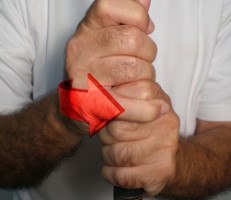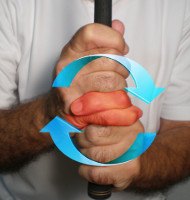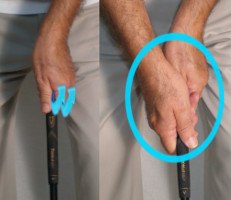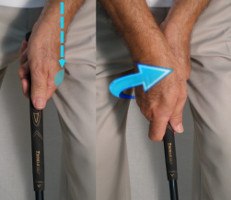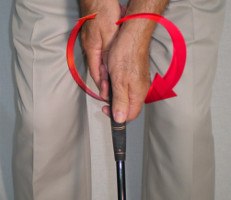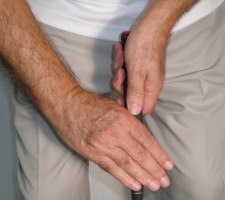Pros and Cons of Every Golf Grip Style |
Best Grip? Overlapping vs Interlocking |
Grip style: Vardon (overlapping)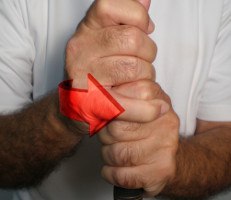 |
Hand position: strong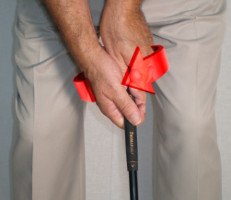 |
Putting grip style / hand position: Reverse overlap / neutral
|

There’s no better feel-good story in golf than Erik Compton. A two-time heart transplant recipient, he defied the odds – to say the least – in making it to the PGA TOUR. Tying for second at the 2014 U.S. Open was an amazing feat, indeed.
Erik Compton’s grip isn’t nearly as interesting as his life story, but it’s a good one to study. It’s a strong model, which helps Compton generate more power than you’d expect from a 5’8”, 150-pound golfer. His left and right hands are both turned noticeably on the handle, with the right hand’s “V” (formed by thumb and forefinger) pointing at his right shoulder. By comparison, a neutral grip “V” points much closer to the sternum.
How does Compton prevent a nasty hook with such a strong grip? Like many players with similar styles, his hands lag a bit behind the hips coming into impact. This keeps the hands from flipping too quickly, producing a “block” action that actually straightens his shots.
When putting, Erik Compton’s grip is standard-issue: nice and neutral, with the back of his left hand pointed down the target line. He maintains this wrist position all the way through the stroke, the method espoused by putting guru Dave Stockton. Others Stockton acolytes include Rory McIlroy.
Compton also uses an oversized putting grip, popular among today’s pros as a means of minimizing the hands’ influence on the stroke.
